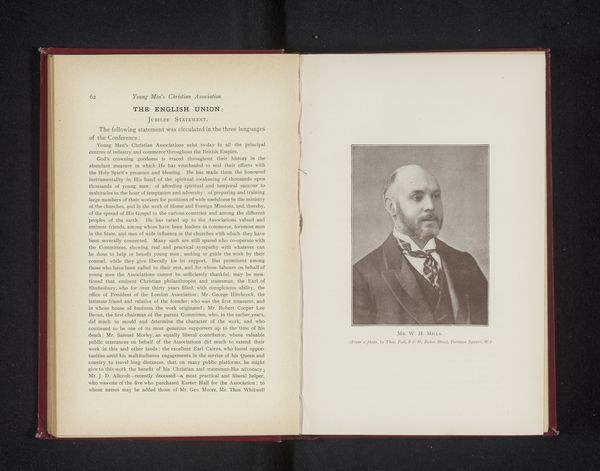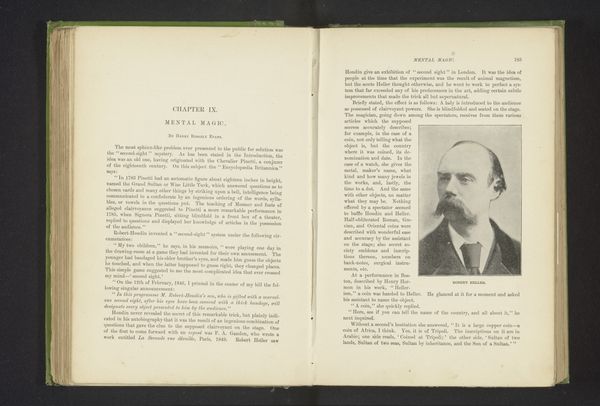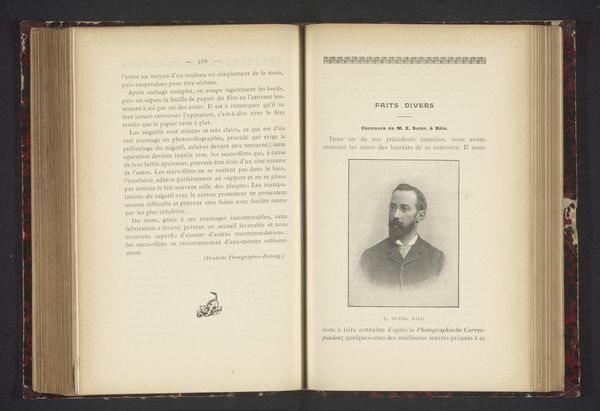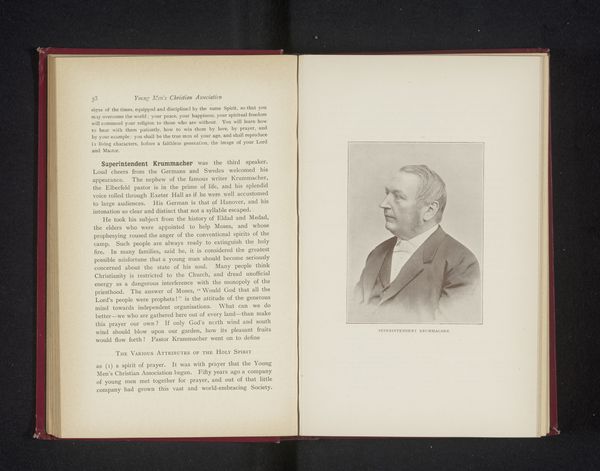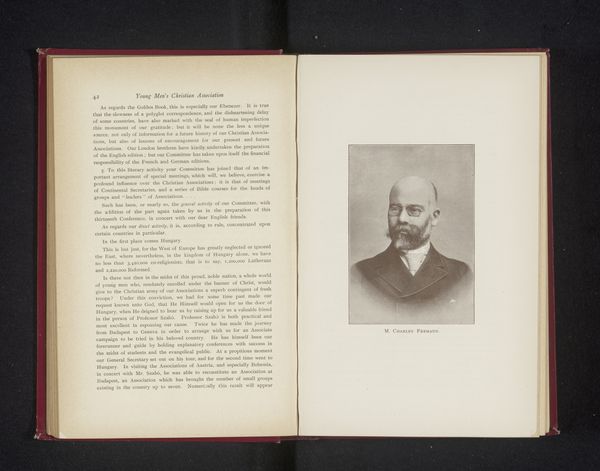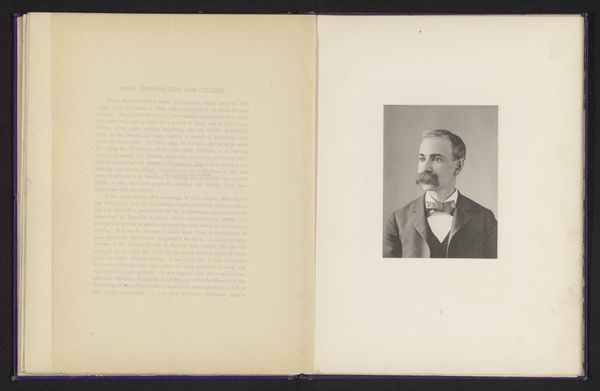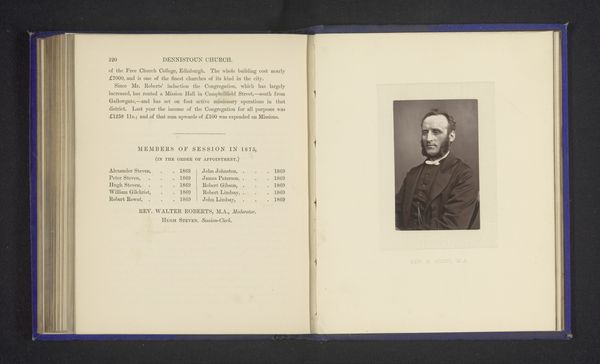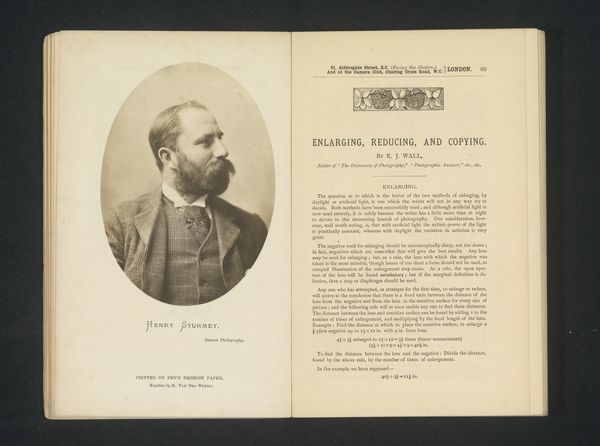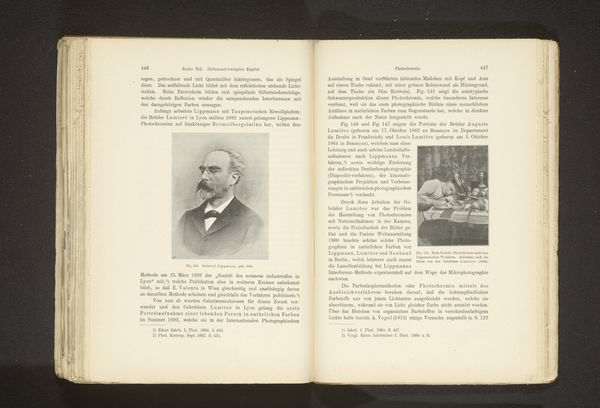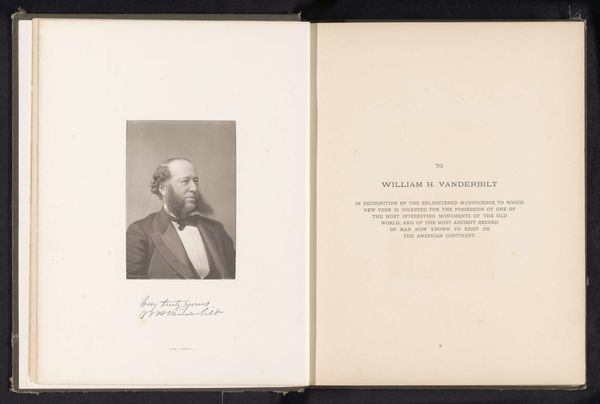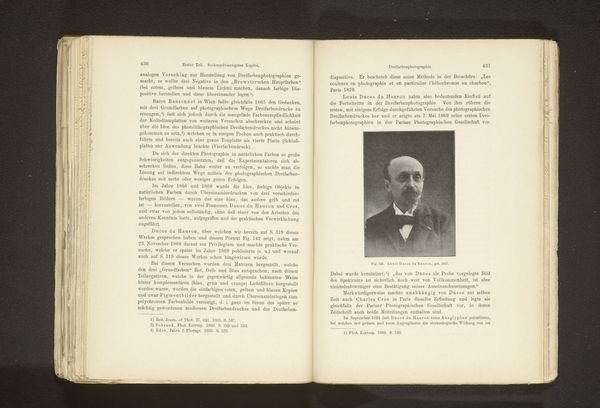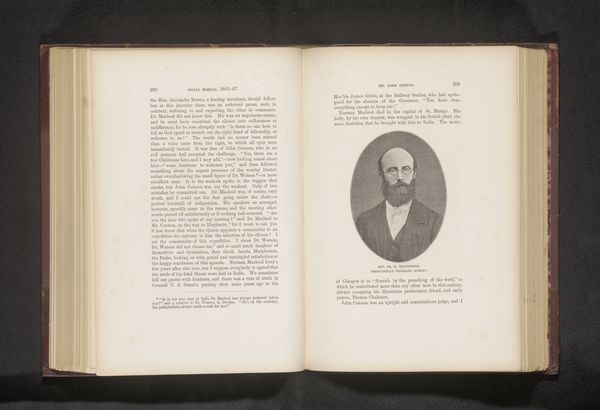
print, photography
#
portrait
# print
#
photography
#
academic-art
Dimensions: height 102 mm, width 75 mm
Copyright: Rijks Museum: Open Domain
Curator: The immediate feeling is, "serious chap"! This portrait of Andreas von Bernstorff, rendered with such a formal air. You sense this immense weight of duty. The sepia tones just amplify the sense of history, the long lineage he belongs to, it feels very much embedded within a certain moment of the past. Editor: Andreas von Bernstorff, captured in this portrait, seemingly from before 1895. I find this image a powerful snapshot of the social fabric. Andreas von Bernstorff likely lived within very structured rules, and this medium - in photography and then printed form – serves as a dissemination of the value he and his societal position hold. It’s a form of soft power, subtly displayed in a book. Curator: I agree on that note; a lot of control and structure present. It is a very common stance we can see portrayed within many portraits: the slight turn of the head, the gaze directed to the side, perhaps indicative of something beyond the frame, some other world to protect or govern, I find the symbolic narrative fascinating! It feels so detached, yet there is also a strong sense of vulnerability to expose oneself in a portrait to a large group of people. Editor: Absolutely. Think about where images such as this one ended up – these books were likely circulated among certain social circles, and reinforced existing class structures. Bernstorff’s likeness is used here, intentionally or not, as a signifier. It highlights his lineage, his contribution, and justifies it within a historical context. I see it as the silent endorsement of that very specific societal role he embodies. Curator: It is very true: it is almost a record. Something like saying, “I was here and relevant”, with that need of belonging and recognition—we humans constantly leave those little crumbs! I think he'd be amused and also feel that his relevance to time has stayed truthful, if he knew we are still analyzing it today. Editor: Yes, that ambition of permanence through portraiture is palpable here. It's fascinating to consider how our perceptions shift over time and continue being renegotiated when the context in which art and portraits are exhibited changes.
Comments
No comments
Be the first to comment and join the conversation on the ultimate creative platform.
